#tarot reference
Text
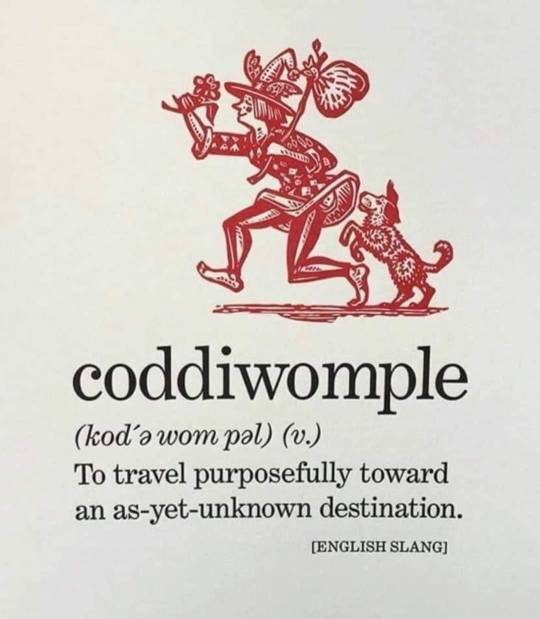
Welcome 2024! I don't know where I'm going yet, but I am sure moving forward!
#about me#stolen memes#stolen from fb#coddiwomple#obscure English#tarot reference#tarot cards#izzy writes#coddiwomple into 2024#image description in alt#forward momentum
21 notes
·
View notes
Text

home is where the heart is (and yours is gone)
#happy holidays#dndads#dndads fanart#dungeons and daddies#dndaddies#dndads s1#glenn close dndads#dndads season 2#dndads odyssey#dndads glenn close#im so sick and fever rn so forgive me for any mistakes in this drawing or in my following explanation#background is covered in crosses for the bad day book. the chains represent his time in meth bay prison#the three swords are a reference to the three of swords tarot card which means like heartbreak or smth#also can be taken literally because his heart exploded#the swords themselves are modelled after the sword of justice to bring in themes of justice and punishment as well as referencing the trial#i also drew the same sword in the blackjack thing.#bottom left is his funeral pyre (referencing his death) and nick jr (representing his son's “death”)#the door is the door to his apartment its number 48 because ep 48 is carry on my wayward son#christmas decor cus of course hed had them up all year round#the plant is a peace lily representing death and funeral s again#headstone is morgan's the crysanthemum represents her death. this is because its also featured in the “remember death” thing i drew once#also i just associate flowers w the close family because it very easily represents both mortality and love#anyway. fuckin. his heart (loved ones + literal heart) are gone and its like. can he ever return home#idk smth about not being able to go back to the way things were smth about having the comfort of a home anymore. leaving all that shit behi#d. i feel so tired#sorry for the long explanation i think i may have went a little too hard on the symbolism but i didn t know how else to#express the feelings of glenn's conversation w darryl in that one episode
951 notes
·
View notes
Text


more au designs
#sonic the hedgehog#sonic#sonic au#amy rose#espio the chameleon#i feel satisfied with amy#espio… i’m working on it#it’s mainly coordinating his colors i’m struggling with#also sorry if the tarot card and shuriken aren’t accurate i free handed those#meaning i did not use references#oh well :P#my art
412 notes
·
View notes
Text

"The cards, the cards, the cards will tell~"
This magical Amy design is from @Pik0PikOo! Go check them out!
#this design really gave me dr facilier vibes which is why I drew her like this#it's a reference to one of the scenes from friends on the other side scene!#rylxdraws#amy rose#sth#sonic the hedgehog#fan design#amy rose the hedgehog#dr facilier#friends on the other side#redraw#disney#artwork#fanart#tarot#magic#shadow man#the princess and the frog
559 notes
·
View notes
Text
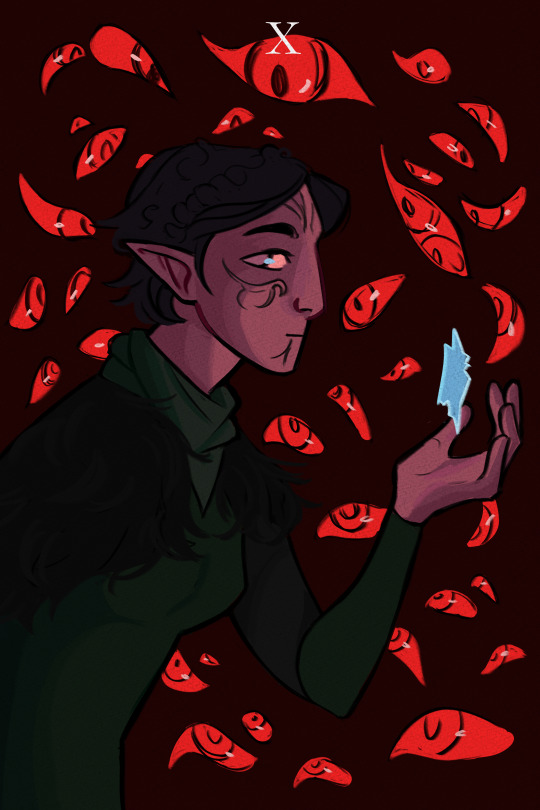


Merrill tarot cards: Act 1, Romance, Act 3.
#merrill#dragon age#dragon age 2#hawkemerrill#my art#hello merrill fans <3#it was rlly tough to choose between merrill and fenris for the number one spot#but as much as i like merrill's cards.... they were the last ones i rendered and i was abt to keel over#so they weren't as fun to do as fenris'#+ the romance and act 3 card having very similar compositions makes her set a bit more monotone to me#ANYWAY#merrill tarot card number ten my absolute beloved <3333#also i pulled these ones out of my ass the only one with an actual reference to a tarot card is the romance one#and its supposed to be the star :)
1K notes
·
View notes
Text

A COMPLETE GUIDE TO THE TAROT
EDEN GRAY | NYC: CROWN PUBLISHERS, 1970
338 notes
·
View notes
Text





Timestamp Gif Roulette ⇆ 05x12: Love Songs (In the Key of Gallagher)
↳Peach + 12 for @lingy910y
#shamelessedit#shamelessnet#shameless#shameless us#ian gallagher#mickey milkovich#gallavichedit#gallavich#debbie gallagher#fiona gallagher#monica gallagher#bianca samson#giffed🍂#colorwheel timestamp roulette#s5#05x12#ling you absolute menace (affectionate)#look what you picked#look what you made me do#i really lost the plot with this one you guys#anyway i really hope all these tarot references land#are they landing??? lemme know lmao
297 notes
·
View notes
Text


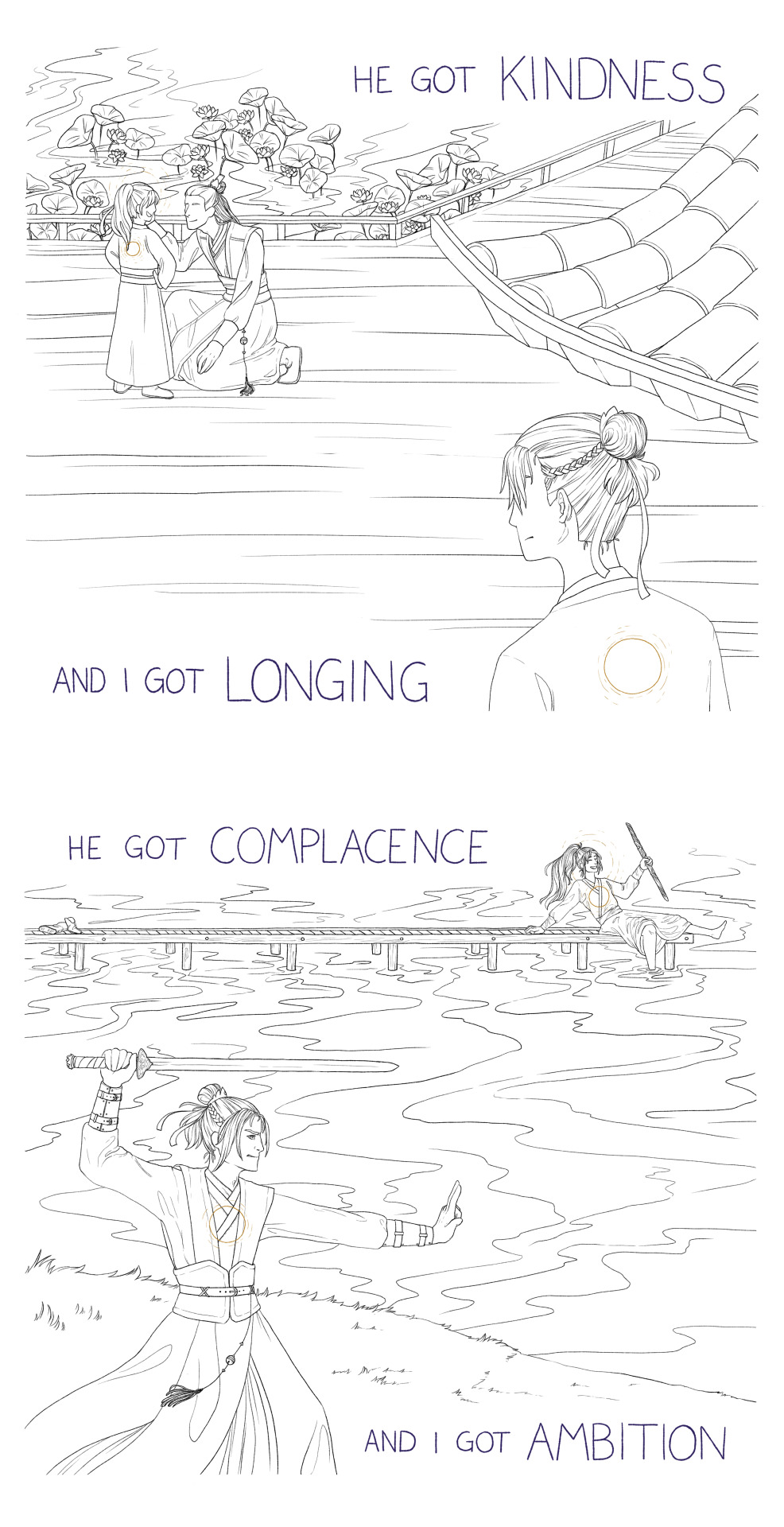

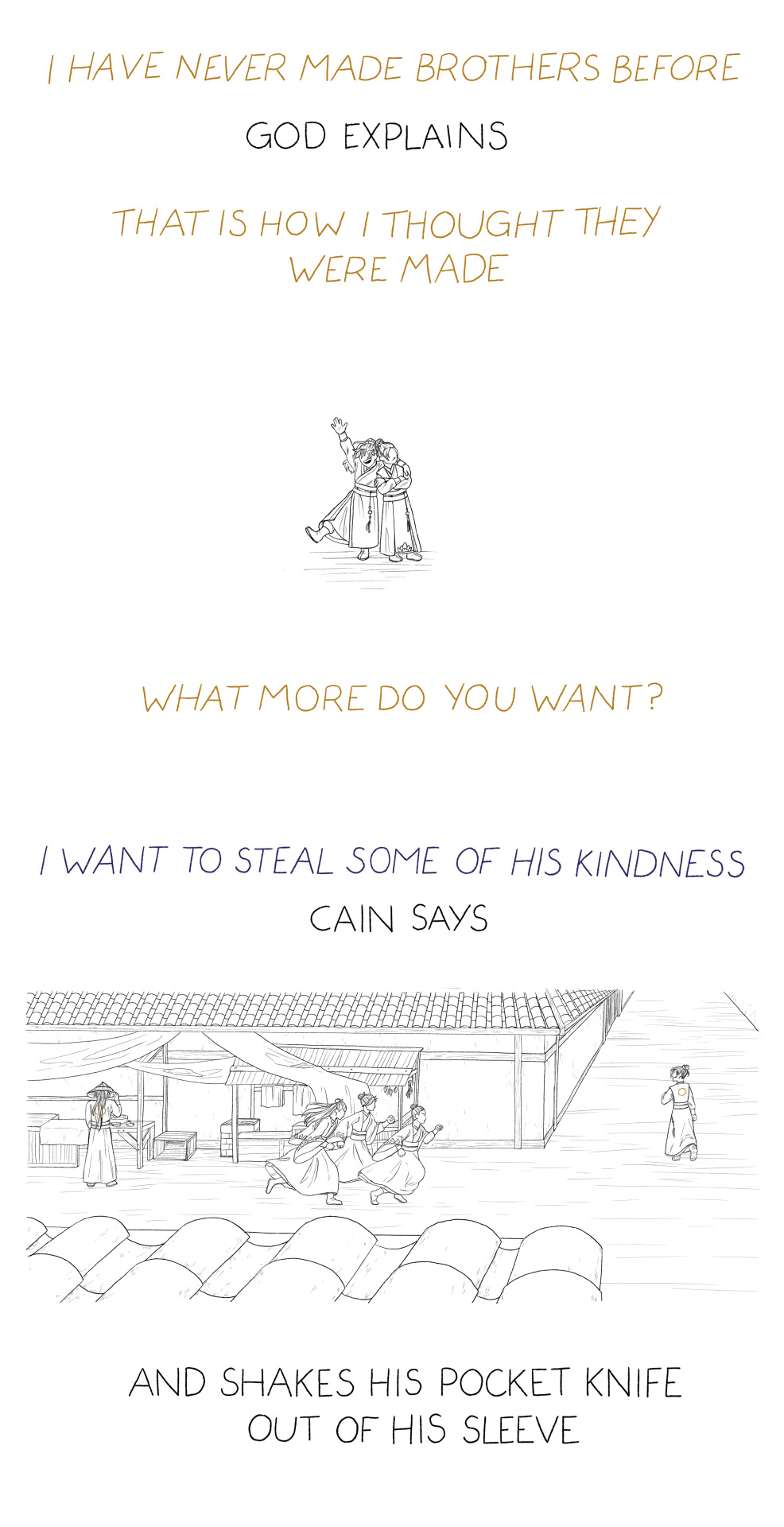
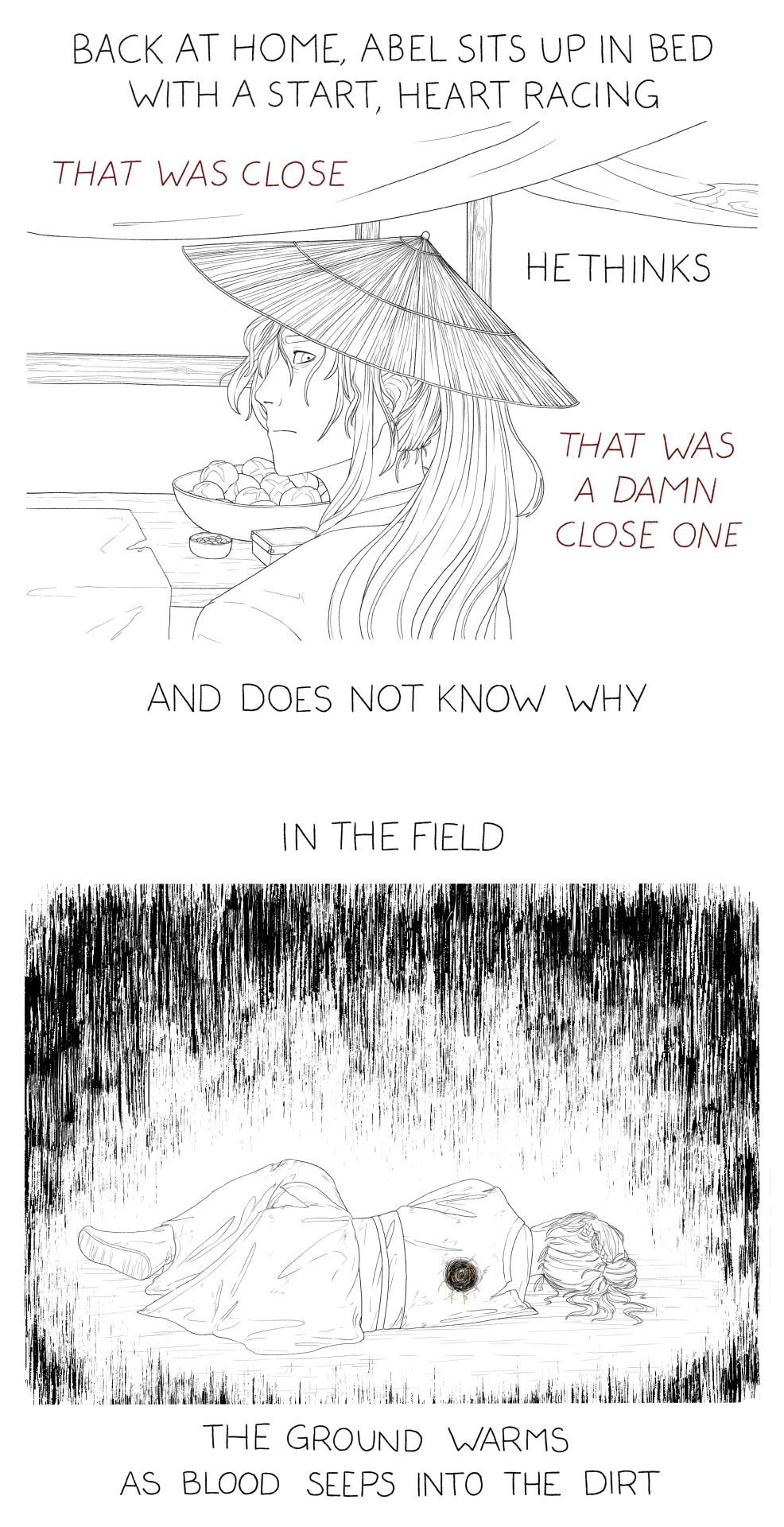
Oh how wonderful, how terrifying, to be loved to destruction
The full quote can be found here
#my art#mdzs#the untamed#wei wuxian#jiang cheng#mdzs spoilers#comic#implied suicide#just in the quote tho#hi I feel a normal amount about these two#in fact I feel a normal amount about all 3 yunmeng siblings and how much they loved each other and how it destroyed them#it has me crying screaming throwing up etc#fanart#because I've figured out the reason I don't do fanart is because I worry about inaccuracies#and also because I'm incapable of being chill about it#case and point: I have more mdzs fanart in the works. its a major arcana tarot decj with the full 22 cards + 4 alternates#and I'm just being so normal about it#please ignore all my many perspective crimes and my badly planned buildings no I did not use references this was meant to be a quick comic
4K notes
·
View notes
Text

| Broken Circle |
-Ah..home sweet home.
~ ~ ~
I'm so proud of this piece omg, look at him, my cursed child :3
I think next card should be with my Hawke.
~ ~ ~
Commissions : Open
#reference used!!!#dragon age#dragon age origins#DAO#Hero of Ferelden#grey warden#warden amell#tate amell#mage#dragon age art#bioware#tarot card#my art#artists on tumblr#digital art#character art#artwork#illustration#commissions are open
758 notes
·
View notes
Text

One of four of my new tarot designs that’ll be out on may the 4th
Next design coming on Sunday 👀
Sale details: 20% off all Star Wars products on my Etsy shop from the 4th- 7th. Four new tarot designs added to the prints and stickers. 5x7 size prints now available for all tarot prints. Free shipping on orders over $35.
#star wars#the bad batch#tarot#fan art#may the 4th#Kate Komics#clone wars#the reference pics for these are hilarious
481 notes
·
View notes
Text
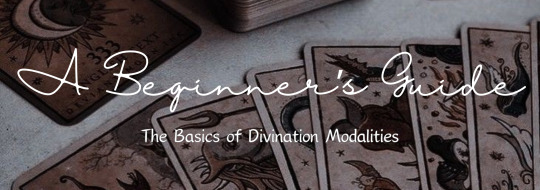
Magicians! Whether you're drawn to tarot cards, crystal balls, or pendulums, there's a divination method out there for everyone. Let's dive into this long post about divination and explore everything you need to know to get started! 🌟
🃏 Tarot Cards:
History: Tarot cards have a rich history dating back to the 15th century, originally used for playing card games. Over time, they evolved into a powerful tool for divination and spiritual insight.
Early Origins: Tarot cards likely originated in the 15th century in Europe, possibly in Italy or France. The earliest known tarot decks were hand-painted luxury items commissioned by wealthy families. These early decks, such as the Visconti-Sforza Tarot and the Tarot de Marseille, were not intended for divination but rather for playing card games similar to modern-day bridges.
Tarot as a Divinatory Tool: By the 18th century, tarot cards began to be used for divination and spiritual purposes. Influential occultists and mystics, such as Antoine Court de Gébelin and Etteilla, popularized the idea that tarot cards held hidden esoteric meanings and could be used for fortune-telling and self-discovery.
The Rider-Waite-Smith Tarot: One of the most iconic and influential tarot decks is the Rider-Waite-Smith Tarot, first published in 1910 by occultist Arthur Edward Waite and artist Pamela Colman Smith. This deck introduced innovative imagery and symbolism, including illustrated scenes on the minor arcana cards, which revolutionized the way tarot was interpreted and understood.
Tarot in Modern Occultism: In the 20th century, tarot experienced a resurgence in popularity within the occult and New Age communities. Influential figures such as Aleister Crowley and Carl Jung explored the psychological and symbolic significance of tarot, further cementing its place as a tool for spiritual insight and personal growth.
Tarot Today: Today, tarot continues to thrive as a popular tool for divination, meditation, and self-reflection. There are countless tarot decks available, ranging from traditional to modern, each with its unique artwork and symbolism. Tarot readers use the cards to explore themes such as love, career, spirituality, and personal development.
💭 Uses: Tarot cards offer guidance, clarity, and introspection. Each card carries its symbolism and meaning, allowing you to tap into your intuition and explore past, present, and future energies.
🃏 Divination: This is perhaps the most well-known use of tarot cards. Divination involves using the cards to gain insight into a specific question or situation. Tarot readers interpret the symbolism and imagery of the cards to provide guidance, clarity, and potential outcomes. Divination readings can focus on various aspects of life, including love, career, relationships, and spiritual growth.
🔍 Self-Reflection and Insight: Tarot cards can serve as powerful tools for self-reflection and introspection. By pulling cards and reflecting on their meanings, individuals can gain insights into their thoughts, emotions, and subconscious mind. Tarot readings can help illuminate patterns, beliefs, and behaviors that may be influencing their lives, allowing for personal growth and transformation.
��� Decision-Making and Problem-Solving: Tarot cards can be used to help make decisions or solve problems. Individuals can consult the cards for guidance and clarity when faced with a dilemma or uncertainty. Tarot readings can provide different perspectives, highlight potential obstacles or opportunities, and help individuals make more informed choices.
💭 Journaling and Creative Expression: Some people use tarot cards as prompts for journaling or creative expression. They may pull a card each day and write about how its symbolism relates to their experiences, emotions, or goals. Tarot cards can inspire creative projects, artwork, poetry, or storytelling by tapping into the archetypal imagery and themes depicted in the cards.
🙏 Spiritual Development and Meditation: Tarot cards can be incorporated into spiritual practices and meditation routines. Some individuals use tarot cards as focal points for meditation, gazing at the imagery to quiet the mind and deepen their connection to their intuition or spiritual guides. Tarot readings can also be used as part of ritual ceremonies or spiritual rituals to invoke specific energies or intentions.
🌟 Relationship Building and Communication: Tarot cards can be used to build deeper connections and facilitate communication in relationships. Couples or friends may use tarot cards to explore their dynamics, deepen their understanding of each other, and foster open and honest communication. Tarot readings can provide a shared language for discussing feelings, desires, and aspirations.
🧘Manifestation and Goal Setting: Some people use tarot cards as tools for manifestation and goal setting. They may pull cards to clarify their intentions, visualize their desires, and identify action steps to manifest their goals. Tarot readings can help individuals align their thoughts, beliefs, and actions with their desires, empowering them to change their lives positively.
Do's: Trust your intuition, keep an open mind, and approach each reading with respect and reverence.
✅ Set Clear Intentions: Before conducting a tarot reading, take a moment to set clear intentions for the session. Focus on the specific questions or areas of your life you'd like to explore and the guidance you're seeking from the cards.
✅ Cultivate a Sacred Space: Create a sacred and peaceful environment for your tarot readings. Light candles, burn incense or play soft music to enhance the ambiance and set the mood for your practice.
✅ Trust Your Intuition: Tarot readings are as much about intuition as they are about interpretation. Trust your instincts and the messages you receive from the cards. Pay attention to your inner voice and how the cards resonate with your feelings and experiences.
✅ Respect the Cards: Treat your tarot cards with care and respect. Store them in a protective pouch or box when not in use, and avoid handling them with dirty or oily hands. Regularly cleanse and consecrate your cards to maintain their energy and integrity.
✅ Practice Regularly: Like any skill, tarot reading requires practice and dedication. Commit to practicing regularly, even if it's just pulling a daily card or conducting readings for friends and family. The more you work with the cards, the deeper your connection and understanding will become.
✅ Journal Your Readings: Keep a tarot journal to record your readings, interpretations, and insights. Reflect on the messages you receive from the cards and how they resonate with your life. Journaling can help you track your progress, identify patterns, and deepen your understanding of the cards.
✅ Seek Learning and Growth: Tarot is a lifelong journey of learning and exploration. Invest in books, courses, or workshops to deepen your knowledge of tarot symbolism, spreads, and techniques. Surround yourself with a supportive community of fellow tarot enthusiasts to share insights and experiences.
Don'ts: Avoid reading for yourself when in a highly emotional state or seeking answers to overly specific questions. Remember, the cards provide guidance, not concrete predictions.
❌ Don't Read When Emotionally Distressed: Avoid conducting tarot readings when you are feeling highly emotional, anxious, or distressed. Emotions can cloud your judgment and intuition, leading to inaccurate readings or misinterpretations of the cards.
Don't Rely Solely on the Cards: While tarot cards can offer valuable insights and guidance, they should not be seen as infallible or deterministic. Use your judgment, common sense, and critical thinking skills when interpreting the cards and making decisions based on their guidance.
❌ Don't Read for Others Without Permission: Always seek permission before conducting a tarot reading for someone else. Respect their boundaries and privacy, and refrain from prying into sensitive or personal matters without their consent.
Don't Give Unsolicited Advice: Tarot readings are not a substitute for professional advice or therapy. Avoid giving unsolicited advice or making predictions about someone else's future, especially if it could cause harm or distress.
❌ Don't Fear Negative Cards: Every tarot deck contains cards with both positive and challenging symbolism. Don't be afraid of so-called "negative" cards like the Death or Tower card. Instead, embrace them as opportunities for growth, transformation, and new beginnings.
❌ Don't Ignore Your Intuition: If something doesn't feel right during a tarot reading, trust your intuition and proceed with caution. Take breaks when needed, and don't push yourself to continue if you're feeling uncomfortable or overwhelmed.
❌ Don't Become Obsessive: While tarot can be a valuable tool for self-reflection and insight, avoid becoming overly reliant on the cards or obsessed with seeking answers to every question or concern. Balance your tarot practice with other forms of self-care, mindfulness, and spiritual exploration.
🔮Crystal Ball Scrying:
History: Crystal ball scrying dates back to ancient civilizations, including ancient Egypt and Celtic cultures. It involves gazing into a crystal ball to receive visions or insights.
📜 Ancient Roots: The practice of scrying dates back thousands of years and can be found in cultures across the globe. Ancient civilizations such as the Egyptians, Greeks, Romans, and Druids all had forms of divination involving reflective surfaces or natural objects. These practices often involved seeking guidance from spirits, deities, or ancestors through the act of gazing into a reflective medium.
🏛️ Medieval Europe: Crystal ball scrying gained popularity during the Middle Ages in Europe, particularly among alchemists, astrologers, and mystics. It was believed that certain stones, such as quartz crystals, possessed mystical properties and could serve as conduits for receiving divine or spiritual messages. Crystal balls became associated with the concept of the "scrying mirror," a tool for accessing hidden knowledge and insights beyond the physical realm.
⏳ Renaissance and Occult Revival: During the Renaissance and the occult revival of the 19th century, crystal ball scrying experienced a resurgence of interest among mystics, occultists, and spiritual seekers. Influential figures such as John Dee, Edward Kelley, and Aleister Crowley explored the practice of scrying as a means of contacting spirits, exploring the subconscious mind, and gaining occult knowledge.
🌍 Victorian Era and Spiritualism: Crystal ball scrying gained popularity during the Victorian era, particularly within the spiritualist movement. Mediums and psychics used crystal balls as tools for communicating with the spirit world and conducting seances. The crystal ball became synonymous with the image of the "fortune-teller" or "gypsy" depicted in popular culture and folklore.
📚 Modern Practice: Today, crystal ball scrying continues to be practiced by psychics, mediums, and individuals interested in divination and spiritual exploration. While traditional crystal balls made of quartz or glass are still used, practitioners may also use other reflective surfaces such as mirrors, black obsidian, or bowls of water. Crystal ball scrying is often incorporated into rituals, meditation practices, or psychic readings as a means of accessing intuitive insights and guidance.
Uses: Crystal ball scrying is a powerful method for accessing the subconscious mind and receiving intuitive guidance. It can be used for divination, meditation, and spiritual exploration.
🔮 Divination: The primary use of crystal ball scrying is for divination, or gaining insight into past, present, or future events. By gazing into the crystal ball and allowing the mind to relax and enter a meditative state, practitioners may receive intuitive impressions, symbols, or visions that provide guidance, clarity, and understanding. Crystal ball readings can address a wide range of questions or concerns, including love, career, health, and spiritual growth.
💬 Personal Reflection: Crystal ball scrying can be used for personal reflection and introspection. By gazing into the crystal ball and allowing thoughts and images to arise spontaneously, individuals can gain insights into their emotions, beliefs, and subconscious minds. Crystal ball scrying can help individuals explore their innermost thoughts, fears, and desires, leading to greater self-awareness and personal growth.
🙏 Spiritual Exploration: Crystal ball scrying can serve as a tool for spiritual exploration and connection. Some practitioners use the crystal ball to commune with spirit guides, angels, or ancestors, seeking wisdom, guidance, and inspiration from the spiritual realm. Crystal ball scrying can facilitate a deeper connection to one's intuition, higher self, or spiritual allies, fostering a sense of inner peace, alignment, and purpose.
Problem-Solving and Decision-Making: Crystal ball scrying can be used as a tool for problem-solving and decision-making. By focusing on a specific question or dilemma and gazing into the crystal ball, individuals may receive insights, solutions, or alternative perspectives that help them make informed choices or overcome obstacles in their lives. Crystal ball scrying can provide clarity, direction, and confidence when facing difficult decisions or challenges.
💡 Energy Healing: Some practitioners use crystal ball scrying as part of energy healing or therapeutic practices. By incorporating the crystal ball into meditation or visualization, individuals can channel healing energy and intention through the crystal, promoting relaxation, balance, and harmony on physical, emotional, and spiritual levels. Crystal ball scrying can enhance the healing process and support overall well-being and vitality.
🌟 Ritual and Ceremony: Crystal ball scrying can be incorporated into ritual and ceremonial practices as a means of invoking spiritual energies, setting intentions, or communing with the divine. Some traditions use the crystal ball as a focal point for meditation, prayer, or spellcasting, harnessing its reflective properties to amplify intention and manifest desired outcomes. Crystal ball scrying can enhance the sacredness and potency of ritual practices, deepening the practitioner's connection to the divine and the unseen realms.
Do's: Create a sacred space, cleanse your crystal ball before use, and practice relaxation techniques to quiet the mind.
✅ Prepare Your Space: Create a calm and sacred space for your scrying practice. Dim the lights, burn incense or candles, and eliminate distractions to create an environment conducive to relaxation and focus.
✅ Cleanse and Charge Your Crystal Ball: Before each scrying session, cleanse your crystal ball to remove any negative or stagnant energies it may have absorbed. You can cleanse it with smoke (such as herb bundles of cedar, garden sage, or rosemary), sound (using a singing bowl or bell), or by placing it under running water. Once cleansed, charge the crystal ball with your intention or positive energy.
✅ Set Clear Intentions: Clarify your intentions before beginning your scrying session. Think about the questions or areas of your life you'd like to explore and focus your energy and attention on receiving guidance and insights from the crystal ball.
✅ Relax and Clear Your Mind: Relax your body and mind before gazing into the crystal ball. Practice deep breathing or meditation techniques to quiet your thoughts and enter a receptive state of awareness. Release any expectations or preconceived notions, allowing yourself to be open to whatever messages or images may arise.
✅ Trust Your Intuition: Trust your inner guidance and intuition during the scrying process. Pay attention to any impressions, feelings, or images that come to you as you gaze into the crystal ball. Trust that the messages you receive are meaningful and relevant to your journey.
✅ Journal Your Insights: Keep a journal to record your scrying experiences, insights, and interpretations. Writing down your impressions can help you track patterns, themes, and symbols that emerge over time, deepening your understanding of the messages received from the crystal ball.
Don'ts: Avoid forcing visions or expecting immediate results. Patience and practice are key when it comes to crystal ball scrying.
❌ Force the Process: Avoid trying to force or control the scrying process. Allow the images and impressions to arise naturally, without imposing your will or expectations onto the experience. Trust that the messages will come to you in their own time and in their way.
❌ Scry When Emotionally Distressed: Refrain from scrying when you're feeling highly emotional, anxious, or stressed. Strong emotions can cloud your judgment and intuition, making it difficult to receive clear and accurate guidance from the crystal ball.
❌ Obsess Over Negative Images: If you encounter negative or unsettling images during your scrying session, don't dwell on them or become fixated on their meaning. Instead, acknowledge the images and release them with love and compassion. Focus on inviting positive and uplifting energy into your space.
Interpret Too Literally: Avoid interpreting the images or symbols in the crystal ball too literally. Instead, focus on the overall feeling or message conveyed by the imagery. Allow your intuition to guide you in discerning the deeper meaning behind the symbols and their relevance to your life.
❌ Compare Your Experience to Others: Every scrying experience is unique to the individual. Avoid comparing your experience to that of others or seeking validation from external sources. Trust in your insights and interpretations, knowing that you are the ultimate authority on your spiritual journey.
❌ Overuse or Depend Solely on the Crystal Ball: While crystal ball scrying can be a valuable tool for spiritual growth and insight, avoid becoming overly reliant on the crystal ball or using it as a crutch. Balance your scrying practice with other forms of divination, meditation, and self-reflection to maintain a holistic approach to your spiritual development.
⚖️ Pendulum Divination:
History: Pendulum divination has been used for centuries to seek answers and guidance from the subconscious mind. It involves suspending a pendulum over a surface and interpreting its movements.
📜 Ancient Origins: Dowsing, the broader term encompassing pendulum divination, has ancient roots and is believed to have originated independently in different cultures. Archaeological evidence suggests that dowsing tools, such as forked branches or rods, were used by ancient civilizations for locating water sources, minerals, and other hidden resources. Dowsing was often practiced by individuals known as "water witches" or "diviners" who possessed a special sensitivity to subtle energies or vibrations in the earth.
🏛️ Historical References: References to dowsing can be found in historical texts and records dating back thousands of years. For example, ancient Egyptian texts describe the use of dowsing rods for finding water and minerals, while ancient Chinese texts mention the use of divining rods for locating underground sources of water. Dowsing was also practiced by European cultures during the Middle Ages and Renaissance periods, where it was used for everything from locating buried treasure to identifying witches.
⏳ Renaissance and Enlightenment: During the Renaissance and Enlightenment periods, dowsing experienced a resurgence of interest and popularity among scholars, scientists, and natural philosophers. Figures such as Leonardo da Vinci, Sir Isaac Newton, and Paracelsus explored the phenomenon of dowsing and its potential applications in various fields. Dowsing was studied alongside other forms of natural philosophy and was often associated with concepts of magnetism, subtle energies, and the human psyche.
🌍 19th Century and Spiritualism: In the 19th century, dowsing became closely associated with the spiritualist movement, which emphasized communication with the spirit world and exploration of psychic phenomena. Mediums and psychics used pendulums as tools for divination, communication with spirits, and accessing intuitive insights. Pendulum divination was integrated into seances, spiritual healing practices, and other spiritualist rituals as a means of receiving guidance and validation from the unseen realms.
📚 Modern Practice: Today, pendulum divination remains a popular and widely practiced form of divination, utilized by people of various spiritual and cultural backgrounds. Pendulums come in a variety of shapes, sizes, and materials, including metal, wood, and crystal. Practitioners use pendulums for a wide range of purposes, including divination, decision-making, energy healing, and spiritual exploration. Pendulum divination is often integrated into holistic healing modalities such as Reiki, chakra balancing, and aura cleansing, as well as used in conjunction with other forms of divination such as tarot cards or astrology.
Uses: Pendulums can be used for yes/no questions, dowsing, and accessing intuitive knowledge. They are versatile tools for divination and spiritual exploration.
⚖️ Answering Questions: One of the primary uses of pendulum divination is to seek answers to questions. By asking yes/no questions and observing the movement of the pendulum, practitioners can receive guidance and insight into various aspects of their lives, including relationships, careers, health, and spiritual matters. Pendulum divination can provide clarity and direction when faced with difficult decisions or uncertainties.
🕰️ Decision-Making: Pendulum divination can be a helpful tool for making decisions. Practitioners can use the pendulum to weigh different options, evaluate potential outcomes, and determine the best course of action. By tuning into their intuition and allowing the pendulum to guide them, individuals can make more informed choices that align with their highest good.
💫 Problem-Solving: Pendulum divination can assist in problem-solving and troubleshooting. By focusing on a specific issue or challenge and asking targeted questions, practitioners can uncover underlying causes, identify solutions, and overcome obstacles more effectively. Pendulum divination can reveal hidden insights and perspectives that may not be immediately apparent, leading to creative solutions and breakthroughs.
🌀 Aura and Energy Work: Pendulum divination can be incorporated into energy healing and aura work. Practitioners can use the pendulum to detect and assess subtle energy patterns, blockages, or imbalances within the body's energy field. By observing the movement of the pendulum, individuals can identify areas of tension or stagnation and channel healing energy to restore balance and harmony on physical, emotional, and spiritual levels.
🌈 Personal Growth and Self-Discovery: Pendulum divination can serve as a tool for personal growth and self-discovery. By asking questions related to inner thoughts, emotions, and beliefs, individuals can gain insight into their subconscious mind and explore areas of self-improvement and healing. Pendulum divination can help individuals uncover limiting beliefs, release emotional blocks, and cultivate greater self-awareness and empowerment.
🌟Spiritual Exploration: Pendulum divination can be used for spiritual exploration and connection. Practitioners can use the pendulum to communicate with spirit guides, angels, or higher consciousness, seeking guidance, wisdom, and support from the spiritual realms. Pendulum divination can deepen one's connection to the divine and facilitate a greater sense of trust, faith, and alignment with universal energies.
Do's: Establish clear communication with your pendulum, ask concise questions, and trust the answers you receive.
✅ Set Clear Intentions: Before beginning a pendulum divination session, take a moment to set clear intentions for the process. Clarify the questions or areas of your life you'd like to explore and the guidance you're seeking from the pendulum. Focus your energy and attention on receiving clear and accurate answers.
✅ Choose a Suitable Pendulum: Select a pendulum that resonates with you energetically and feels comfortable to use. Pendulums come in various shapes, sizes, and materials, so choose one that feels intuitively right for you. You may also choose to cleanse and consecrate your pendulum before using it to remove any previous energies and imbue it with your intention.
✅ Establish Clear Communication: Before beginning your divination session, establish clear communication with your pendulum. Hold the pendulum in your hand and ask it to show you a clear and accurate response for "yes" and "no" movements. Observe how the pendulum responds to different questions and affirmations, trusting the movements as indications of intuitive guidance.
✅ Practice Grounding and Centering: Ground and center yourself before engaging in pendulum divination. Take a few deep breaths, visualize roots extending from your body into the earth, and imagine yourself surrounded by a protective bubble of light. Grounding helps to stabilize your energy and enhance your connection to the pendulum and your intuition.
✅ Trust Your Intuition: Trust your inner guidance and intuition throughout the pendulum divination process. Pay attention to any intuitive impressions, feelings, or insights that arise as you work with the pendulum. Trust that the messages you receive are meaningful and relevant to your situation, even if they may not always align with your expectations.
✅ Maintain Respect and Ethical Conduct: Treat the pendulum with respect and reverence as a sacred tool for divination. Approach the process with sincerity, honesty, and integrity, refraining from asking frivolous or inappropriate questions. Avoid using pendulum divination to manipulate or control others or to pry into sensitive or private matters without their consent.
Don'ts: Avoid relying solely on the pendulum for major life decisions or asking questions that are too vague or ambiguous.
❌ Don't Engage When Emotionally Distressed: Avoid engaging in pendulum divination when you're feeling highly emotional, anxious, or stressed. Strong emotions can cloud your judgment and intuition, leading to inaccurate or unreliable readings. Wait until you're in a calm and centered state before using the pendulum for divination.
❌ Don't Rely Solely on the Pendulum: While the pendulum can be a valuable tool for accessing intuitive guidance, avoid becoming overly reliant on it or using it as a substitute for your inner wisdom. Use the pendulum as a complementary tool alongside your intuition, critical thinking skills, and common sense when making decisions or seeking guidance.
❌ Don't Forget to Ground and Close: After completing a pendulum divination session, remember to ground yourself and close your energy. Thank the pendulum for its guidance and assistance, and express gratitude for the insights received. Release any residual energy or attachments and return to a grounded state of awareness before continuing with your day.
❌ Don't Obsess Over Negative Outcomes: If you receive a negative or unsettling response from the pendulum, don't dwell on it or become overly fixated on the outcome. Remember that pendulum divination is a tool for guidance and insight, not a predictor of fixed outcomes. Trust that the messages you receive are meant to serve your highest good and empower you to make informed choices.
❌ Don't Compare Your Results to Others: Every individual's experience with pendulum divination is unique. Avoid comparing your results or interpretations to those of others, as each person's energy, intuition, and circumstances are different. Trust in your intuition and interpretation of the pendulum's movements, knowing that you are the ultimate authority on your spiritual journey.
There are other modalities that I haven't covered in depth. Let's touch a bit on each of these main ones:
Scrying: Scrying is a broad term encompassing various divinatory practices involving gazing into reflective surfaces or mediums to receive insights or visions. In addition to crystal ball scrying, other forms of scrying include using mirrors, water, fire, smoke, or black mirrors to access intuitive guidance and symbolic imagery. I touched on specifically crystal ball scrying, but there are many other types of scrying to fit your needs, the basics are mostly the same.
Astrology: Astrology is the study of celestial bodies' positions and movements to interpret their influence on human affairs and natural phenomena. Astrologers use birth charts, horoscopes, and planetary alignments to provide insights into personality traits, life events, and compatibility.
Numerology: Numerology is the study of numbers and their symbolic meanings. Numerologists analyze numbers associated with names, birthdates, and events to uncover insights into personality, life paths, and potential outcomes. Numerology can involve calculations such as life path numbers, destiny numbers, and personal year cycles.
Palmistry: Palmistry is the practice of reading the lines, shapes, and markings on the palms of the hands to gain insight into personality traits, life events, and potential future outcomes. Palmists examine features such as palm lines (e.g., heart line, head line), mounts, and finger shapes to provide interpretations.
Runes: Runes are ancient symbols used in divination, originating from Germanic and Norse cultures. Runecasters typically use sets of carved stones or wooden tiles inscribed with runic symbols. By casting or drawing runes and interpreting their positions and meanings, practitioners can gain insights into various aspects of life and decision-making.
Tea Leaf Reading (Tasseography): Tasseography is the practice of interpreting patterns and symbols formed by tea leaves at the bottom of a cup or vessel. Practitioners observe the shapes, lines, and arrangements of the tea leaves to provide insights into future events, emotions, and outcomes.
Cartomancy: Cartomancy is the practice of using regular playing cards or specialized decks (other than tarot cards) for divination purposes. Practitioners interpret the suits, numbers, and symbols on the cards to provide insights into past, present, or future events and circumstances.
Dream Interpretation: Dream interpretation involves analyzing the symbols, themes, and emotions present in dreams to gain insights into the dreamer's subconscious mind and waking life. Dream interpreters use various techniques and frameworks to interpret dreams and uncover their meanings and messages.
I primarily use tarot and pendulum divination as well as black mirror scrying, however, the basic understanding of many types of divination can allow you to become a well-rounded practitioner.
#queue the magick#witch#witchcraft#witchblr#magickkate#reference#witchy#divination#types of divination#tarotblr#tarot reading#pendulum#scrying#witch aesthetic#witchy vibes#witches#beginner witch#witch tips#witchcraft 101#witchcraft community#witchyvibes#witchy shit#witches of tumblr#witchcore#witch community#witch blog#witchtok
143 notes
·
View notes
Text



UPRIGHT: Sudden change, upheaval, chaos, revelation, awakening
#my art#SH:TA#sherlock holmes the awakened#frogwares holmes#frogwares watson#< ? once again idk how im supposed to tag these guys#i had an image of this in my head on its own just as a visual reference to the tarot card but then when i did a little research#i was like Hoho this is very fitting#and then i blacked out for 3 days and this was on my screen#i started listening to sherlock n co also while working on this its VERY funny. im sure theres tons of references that are going#over my head but personally i just like that watson sometimes has the exact same way of speaking as wheatley from portal 2
118 notes
·
View notes
Text

2/3 of my Tarot thing for the @merlintarotfest thingy
#dropping and running#BYEEEEEEE#merlin#bbc merlin#arthur pendragon#merthur#merlin bbc#arthur#merlin emrys#merlin fanart#fanart#bradley james#tarot#my art#artist on tumblr#nine of cups#there are references to a certain episode here#bbc merlin fanart#arthur bbc#arthur x merlin#the adventures of merlin#merlin/arthur#merlin fandom#merlinfanart#merlinbbc#merlin art#bbc arthur
361 notes
·
View notes
Text

#sun coded characters my beloved <3#is rune a god not quite but the arcana are referred to as such enough times for meme purposes#apollo pjo#trials of apollo#toa#kihrin d'mon#a chorus of dragons#rune saint john#the tarot sequence
37 notes
·
View notes
Text
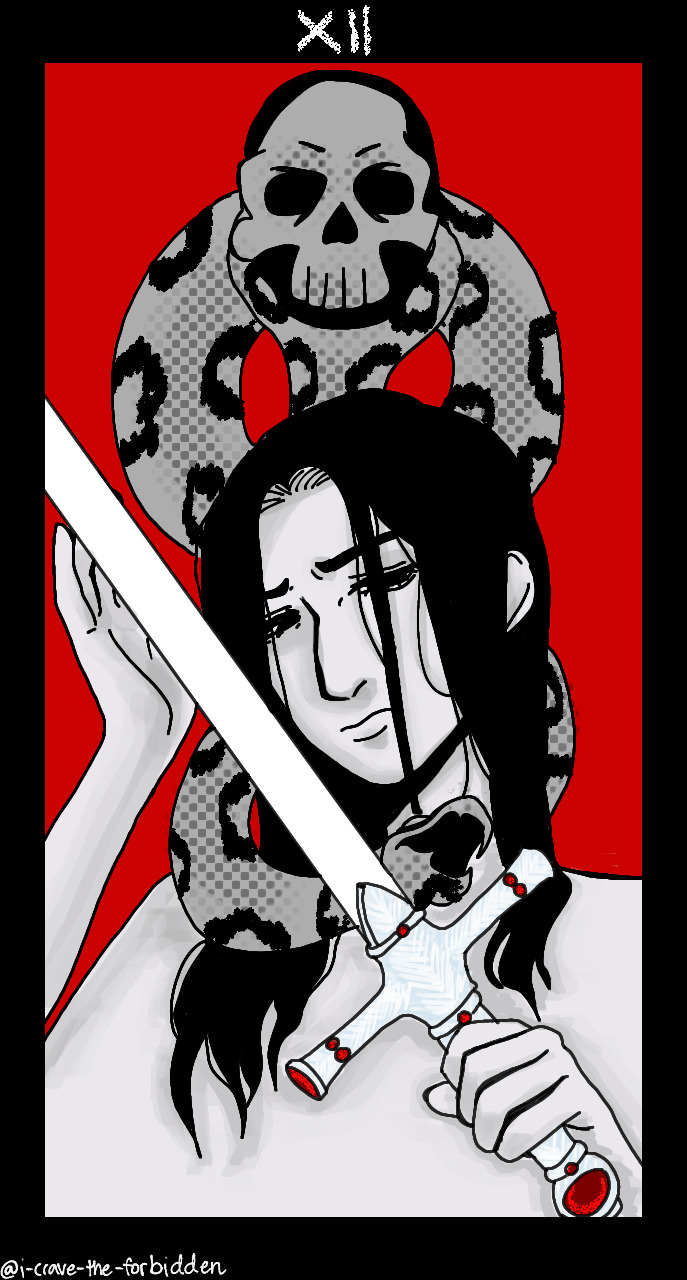
"My story's gonna end with me dead from your poison-"
I listened to Poison on repeat and lemme tell you, it's totally Sev Snape-coded I'm not insane-- it can even refer to both Voldie and Dumbles in the first and second half of the song anyways thanks for joining my TedTalk
#severus snape#my art#BROS JUST LOOK AT THE LYRICS#😭😭😭😭#anyways the roman numeral on the top#refers to the tarot the hanged man#it means sacrifice/martyrdom#i was deciding between that and the fool and a reversed hermit
52 notes
·
View notes
Text

xx. judgement
#neuvillette#genshin impact#genshin fanart#tarot card#I was possessed by an idea (part 2)#to go with the Furina I did a few weeks ago!#his costume is sooooo fiddly#constantly doing psychic damage to myself looking at the cutscene for reference#kinda want to get prints of these two…?#teleport warning draws
36 notes
·
View notes